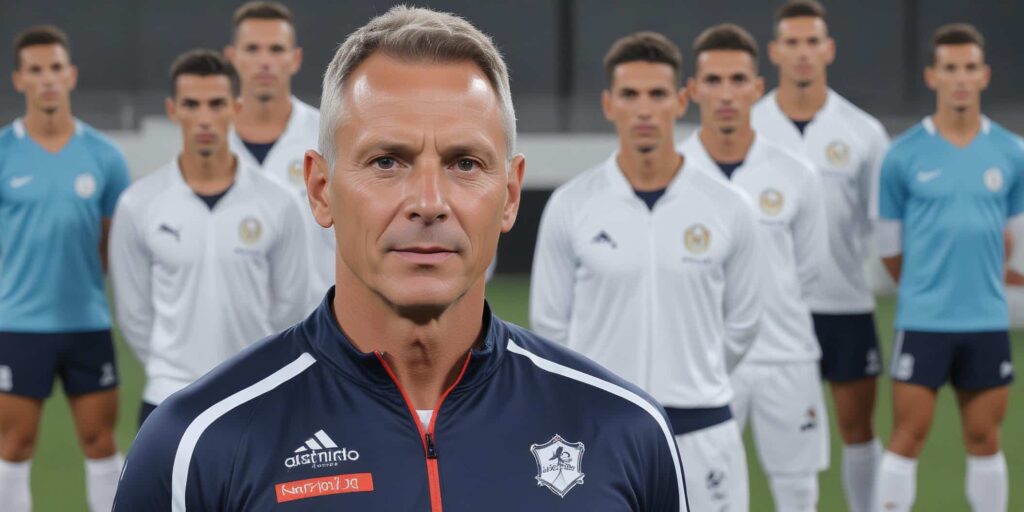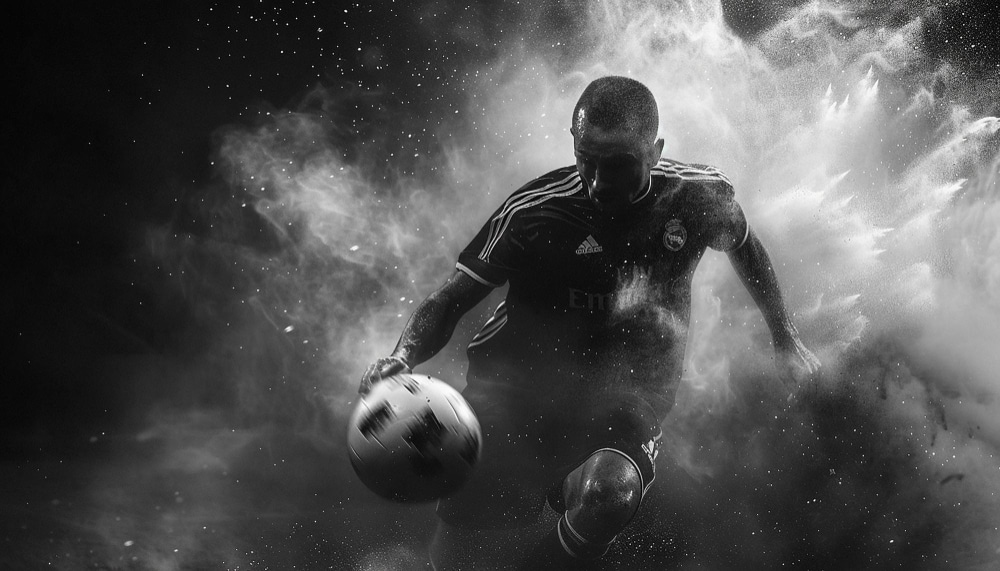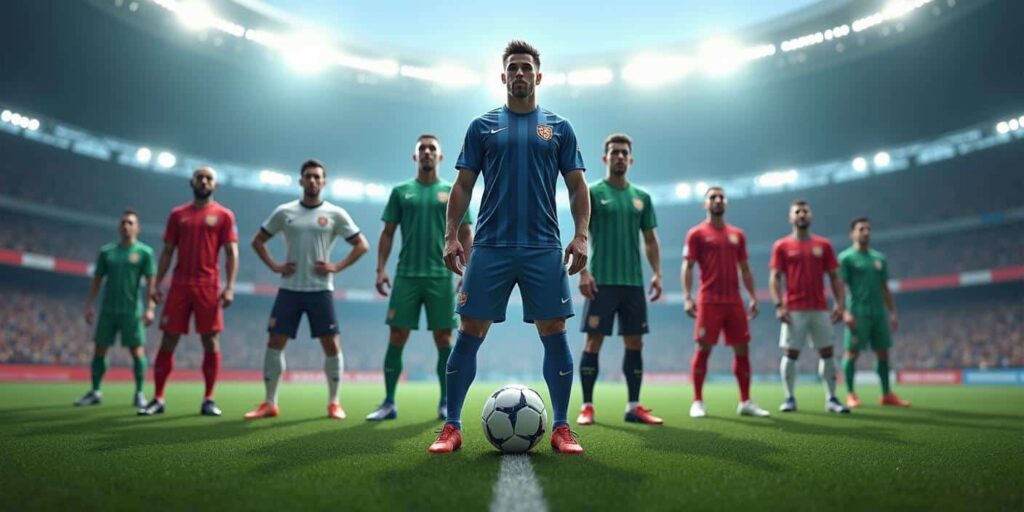The soccer scouting has evolved from an activity based on manual observation to a detailed and digitized process, where data and technology play a key role. It is a key practice for discovering new talent, analyzing player performance and helping clubs make sound strategic decisions.
What is soccer scouting? ⚽
Soccer scouting is the process of searching, observing and analyzing players with the objective of evaluating their potential and performance. This analysis includes a detailed review of the players' technical, tactical, physical and mental abilities. Scouting is not only focused on youth or promising players, but also on professional players, seeking to improve clubs' squads based on specific needs.

The work of scouting is multifaceted:
- Talent discoveryTo identify young players with future projection.
- Analysis of rivalsUnderstanding the strengths and weaknesses of opposing teams.
- Team reinforcements: Finding players with the characteristics that are missing in a squad.
Traditionally, scouts conducted live observations, taking manual notes on player performance. However, the use of technology has revolutionized this activity, allowing clubs to conduct more complete, faster and more accurate analyses.
▶ You may be interested in: Best soccer scouting tool
Keys to soccer scouting
1. Technical evaluation
One of the most important aspects is a player's technical ability. This includes ball control, passing accuracy, dribbling ability, shot on goal and more. Scouts study how a player performs in real game situations, looking for patterns of behavior in key moments, such as attacking, defending or quick transitions.
2. Tactical analysis
Understanding the game is vital. A technically talented player may not be as effective if he does not understand the team's tactics and strategies. Soccer scouting includes evaluating how a player moves on the field, how he interacts with teammates and how he responds to different tactical scenarios (high pressing, defensive retreat, etc.).
3. Physical appearance
Physical ability is another crucial factor in player analysis. This is not limited to just speed or strength, but also endurance and the ability to remain consistent throughout the 90 minutes. A good scout also evaluates a player's ability to recover after intense efforts and his readiness to withstand the physical load of a full game.
4. Mentality and attitude
A player's mental qualities can make the difference between success and failure. Scouting includes the analysis of factors such as resilience, decision-making under pressure, attitude towards teamwork, and the ability to lead in difficult moments.
DEFINITION | Soccer scouting is the process of identifying and evaluating players with potential, analyzing their skills, performance and characteristics in order to make informed decisions about transfers or talent development within a club.
Differences between: Scout vs Analyst VS Recruiter
In the soccer world, it is common to hear the terms scout, analyst and recruiter used interchangeably, but while they share the goal of improving team performance, each plays a specific role within the player discovery and evaluation process. It is important to understand the differences between them to understand how they contribute to a soccer club's success.
1. Scout

The scout is the professional in charge of identifying new players with potential.Whether at the youth level, local leagues or international competitions, scouts often watch live games or review tapes to assess individual talent and the player's fit with the team's needs. Scouts often watch live games or review tapes to assess individual talent and the player's fit with the team's needs.
His focus is mostly on discovering players who are not yet on the radar of the big clubs, and he focuses on aspects such as technical, physical and psychological skills.
Main tasks of a scout:
- Attend games and tournaments to observe players.
- Evaluate the technical, tactical, physical and mental capabilities of the players.
- Make recommendations to coaches and sporting directors on possible signings.
2. Analyst

Within the soccer scouting the analyst focuses on in-depth and detailed analysis of both player and team performances. It uses statistical data, video analysis tools and specialized software to study the playing patterns, strengths, weaknesses and tactical decisions of players and teams. Analysts work primarily in offices or on the field, and collaborate directly with the coaching staff to plan strategies and tactical improvements.
Main tasks of an analyst:
- Perform detailed analysis of games and training sessions.
- Process and analyze data to identify patterns of play and performance.
- Prepare tactical reports to help the coaching staff prepare strategies for future matches.
3. Recruiter

The recruiter, also known as "recruiter" or head of transfers, is in charge of managing the process of recruiting new players for the club.. Their work ranges from initial talent identification to negotiations with players, their agents and other clubs. Recruiters rely on scouting reports and analysts to make signings that reinforce the team's needs, but they must also take financial and contractual factors into account.
Main tasks of a recruiter:
- Oversee the signing process, from talent search to contract signing.
- Maintain relationships with agents, clubs and other stakeholders.
- Negotiate contracts and transfer terms with players and clubs.
Key differences between scout, analyst and recruiter
| Role | Main function | Key tasks | Main tools |
|---|---|---|---|
| Scout | Identification of emerging talent | Observe games, evaluate skills, make recommendations | Live observation, technical reports |
| Analyst | Detailed performance analysis and tactics | Data processing, statistical analysis, video analysis | Analysis software, statistical data |
| Recruiter | Player management and recruitment | Negotiate contracts, coordinate transfers, manage transfers, manage transfers | Networking, contract management |
Each of these roles is essential to ensuring that a soccer club finds and retains the best possible talent, optimizing both on-field performance and the market value of the team. While they may work closely together, their responsibilities and working methods are distinctly different.
How soccer scouting has changed
The use of technology has greatly expanded the capabilities of soccer scouting. With the advent of Big Datavideo analytics platforms and, more recently, the Artificial Intelligence (AI)The process has become faster, more accurate and efficient.
▶ You may be interested in: Tracking up-and-coming players: the new era of scouting
1. Data analysis and statistics
The collection of statistics has grown exponentially in recent years. Today, clubs have access to a wealth of data that they can analyze to obtain valuable information about players. This data includes the number of successful passes, kilometers traveled, duels won, shooting accuracy percentage, among others.
Analysis platforms such as Wyscout y Opt have enabled teams to access millions of data points on players around the world. This offers a much more detailed and objective view than the human eye could ever capture live.
2. Video analysis
Video is a fundamental tool in modern scouting. Scouts can access hundreds of hours of match footage and edit specific segments to help them study a player's performance in detail. In addition, analytics platforms allow players to be compared across leagues and competitions, broadening the range of talent discovery.
3. Artificial Intelligence and Machine Learning
The IA is changing the game by enabling more accurate predictions of future player performance. The algorithms of Machine Learning analyze an enormous amount of data to detect patterns that might go unnoticed by human scouts. In addition, these technologies can predict a player's evolution based on his current performance and injury history.
For example, the AI can suggest tactical adjustments based on a player's specific skills or identify hidden talents that have not yet caught the attention of the sports media.
4. Global platforms
Today, there are soccer scouting platforms that allow clubs, agents and scouts to access detailed information on thousands of players from all over the world. These platforms allow you to view detailed statistics, complete matches and performance summaries. With them, scouting is no longer limited by geography or time.
The future of soccer scouting

As soccer advances, so do soccer scouting tools and strategies. In the future, AI and Big Data will play an even more dominant role, offering predictive insights that enable clubs to detect emerging talent with greater accuracy. In the long term, these technologies will help mitigate risks in hiring decisions and optimize overall team performance.
AI in performance prediction
AI not only facilitates real-time data analysis, but can also project how a player will perform in the future. This is based on a combination of different sources of information: from his current statistics to his injury history and physical characteristics. With this, clubs can anticipate potential problems and make informed long-term decisions.
Real-time scouting and analysis
AI also enables real-time analysis, where coaches can adjust tactics during the match based on immediate data, something that is already starting to be implemented in elite teams. In addition, predictive analytics makes it possible to identify weaknesses in the opponent's game and proactively optimize game strategy.

Revolutionize your soccer scouting with ENIGMIA AI!
Predict the future of your team by identifying emerging talent with accurate data and real-time analytics. Don't get left behind: visit our site and transform your sports strategy today - request a free demo!
Conclusion
The "soccer scouting". has evolved enormously thanks to the use of advanced technologies such as AI, Big Data and global analytics platforms. What was once a task limited to manual observation has today been transformed into a complex, digital process that maximizes effectiveness in the search for talent. Understanding these keys and tools is essential for any club or professional wishing to be at the forefront of player analysis and discovery.




